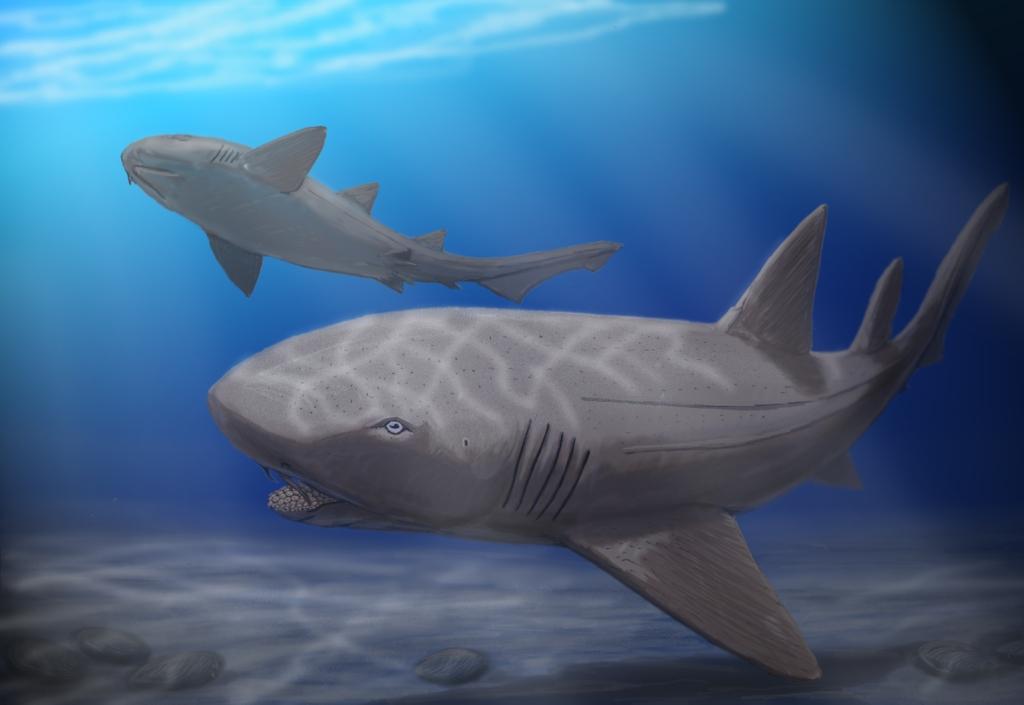New fossil evidence suggests there were gigantic sharks lurking in Cretaceous seas, around 90 million years ago, but they weren't terrifying monsters - these sluggish fish probably sat about on the seafloor, munching on shellfish.
This isn't the first time paleontologists have uncovered fossilized parts of Ptychodus mortoni but new findings in Kansas, US reveal these mysterious sharks that went extinct at the same time as the dinosaurs were probably much bigger and slower-moving than previously thought.
 Based on fossilized teeth, scales, and parts of the jaw, the team publishing in the journal Cretaceous Research and led by Kenshu Shimada of DePaul University in Chicago, Illinois, estimate these sharks could have been over 10m in length - longer than two Humvees parked end to end, and larger than the basking sharks that cruise our oceans today.
Based on fossilized teeth, scales, and parts of the jaw, the team publishing in the journal Cretaceous Research and led by Kenshu Shimada of DePaul University in Chicago, Illinois, estimate these sharks could have been over 10m in length - longer than two Humvees parked end to end, and larger than the basking sharks that cruise our oceans today.
The smooth shape of their scales suggests these sharks were not built for speed: fast swimming sharks tend to have more pointed scales that help to improve swimming efficiency by reducing drag.
Their flat, plate-like teeth would have been perfect for crushing hard shellfish.
It's thought these ancient sharks may have looked similar to modern-day nurse sharks that spend most of their time resting on the seafloor - proving that not all sharks need to keep swimming to breathe, a commonly misconception.
Even bigger ptychondontid shark teeth have been found, suggesting closely related species to Ptychodus mortoni could have been even more gigantic, and perhaps were the biggest ever shellfish eaters known on earth.
But just why these sharks were so enormous, at the same time as many other creatures in the sea including clams and other fish, remains an enticing mystery.
- Previous Fish use UV to spot the difference
- Next Grounding Mosquitoes










Comments
Add a comment